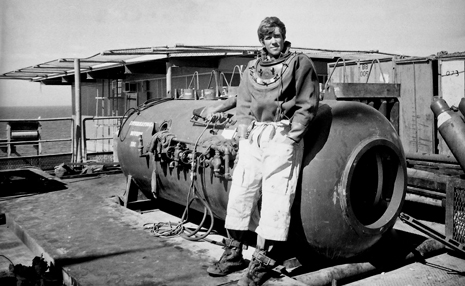Innovative thinkers
|
Rod Stanley
As a real-life Aquaman, Rod Stanley, CEO of OceanWorks International, has been fascinated by the ocean since childhood. From his days as curator of Australia’s first Oceanarium to pioneering some of the firsts in subsea robotics, Stanley’s passion for the deep sea has led him to explore near every major ocean on earth—and promote the design of ROV systems that manage the sea floor with the click of a button. Stanley was drawn to exploring the ocean at a young age, becoming a free diver off the coast of Australia at the age of 12. When Australia’s first Oceanarium opened in Queensland, Stanley became a marine wildlife diver, catching fish and dolphins for the center. “I was training dolphins, then I began training sea lions that had been imported from California,” said Stanley, who became the Oceanarium’s curator. “And then, the offshore oil and gas business started in Australia.” Using the only equipment available at the time, Stanley went through heavy-gear diving training and began working on pipeline and platform inspections for DiveCon. “I was one of the first divers there, when the gas was still bubbling,” he said. When Oceaneering acquired DiveCon, he continued diving, inspection and repair work. After becoming regional manager for Oceaneering in the North Sea, Stanley worked on some of the world’s first ROV operations, using the first atmospheric diving suits. “As we got deeper, over 1,000 ft, decompression was a major problem. We tried the ROV and it worked,” he said. In 1986, Stanley founded Sonsub. “The goal of that was to make the ROV do everything. We had to understand what each client’s problem was,” he said. Sonsub soon expanded to Asia, the North Sea and the U.S. The company partnered with Shell to do an inspection job on the Cognac platform, in 1,000 ft of water in the Gulf of Mexico. “That was the trigger point of us expanding our business, what moved us into deepwater,” Stanley said. Along with designing equipment for projects all over the world, Sonsub set several shallow-water records off the coast of Australia—including the first time that magnetic particle and ultrasonic inspections were done with an ROV. Stanley sold Sonsub to Italy’s Eni in 1994 with the assistance of investors Simmons & Co. After joining Hardsuits and working in atmospheric diving suits, Stanley joined American Oilfield Divers. Stanley became CEO, led a capital raising and managed the aquisition of Hardsuits, significantly improving the stock price over an 18-month period. While he was semi-retired, the management of the Hardsuits division of Stolt Offshore, who then owned the company, did a buy out and formed OceanWorks, a subsea fabrication company. Stanley re-joined the company as CEO in 2005, when the company mostly provided military support. Stanley saw a new opportunity. Today, the oil and gas industry comprises a majority of OceanWorks’ business. Aside from engineering “Seafloor Networks,” comprised of 24/7 ocean monitoring, the company has also developed seabed node systems, which transmit data to shore via cable. The company’s node system for ONC (Ocean Networks Canada) project is rated to 10,000 ft and some of its systems are able to operate in the world’s harshest ocean currents. In the wake of the Macondo blowout in the Gulf of Mexico, OceanWorks joined forces with the Marine Well Containment Company (MWCC) to build a unique dispersant system. OceanWorks has engineered a 30-ton battery-powered pump system tied into 12 dispersant-filled skids. With an array of new projects in queue, Stanley is determined to keep advancing in his passion of exploring the deep seas. “As I’m going through my life, the things I’m doing, to me, seem pretty normal,” Stanley said. “But this industry moves very fast. Technology changes. You have to be leading it, not just following it.”
|
- Advancing offshore decarbonization through electrification of FPSOs (March 2024)
- Subsea technology- Corrosion monitoring: From failure to success (February 2024)
- Prices and governmental policies combine to stymie Canadian upstream growth (February 2024)
- U.S. producing gas wells increase despite low prices (February 2024)
- U.S. drilling: More of the same expected (February 2024)
- U.S. oil and natural gas production hits record highs (February 2024)



